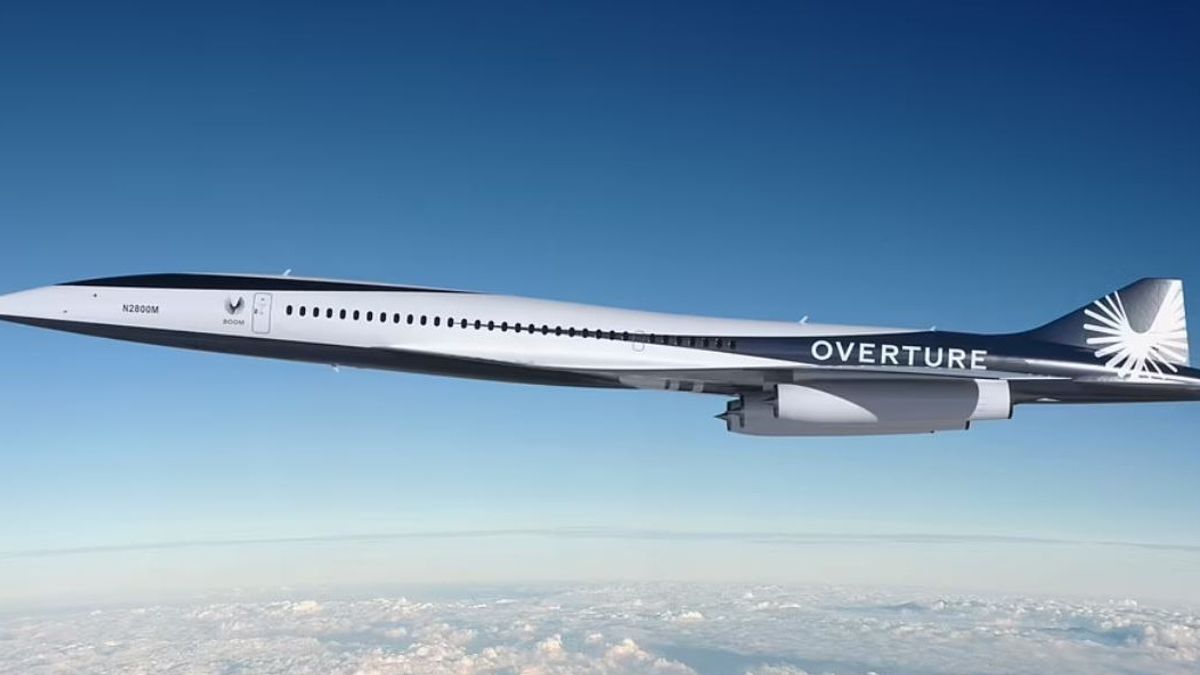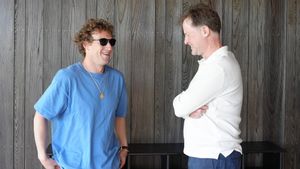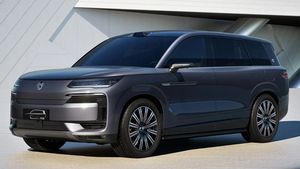JAKARTA – The desire to fly from Miami to London in just five hours may sound too good to be true for many travelers. But that could become a reality in just seven years, following news that American Airlines had agreed to buy 20 Overture jets from planemaker Boom Supersonic.
The Overture, dubbed the 'Son of Concorde' is still in development, but is expected to be the 'fastest aircraft in the world', reaching speeds of Mach 1.7 (about 1,300 mph).
This is double the speed of current commercial jets, and could cut travel times between Miami and London from nine hours to just five hours.
“Overture is our flagship aircraft, a supersonic commercial aircraft that will carry up to 88 passengers,” explains ' Boom Supersonic on its website. 'We designed Overture to industry-leading speed, safety and sustainability standards.'

Here are the key features in Overture, ahead of its launch in 2025, as well as the first flight in 2026, and the first passenger flight in 2029.
Four Machine Design
The Overture is powered by four powerful wing-mounted engines that propel the aircraft up to a cruising speed of Mach 1.7 (1,300mph) over water, and just below Mach 1 (767mph) over land without the use of afterburners.
“The use of four engines keeps weight and temperature in balance, and minimizes the size requirements of each machine, which allows production of these machines to be within today's supply chain and manufacturing capabilities,” explains Boom Supersonic.
According to Boom Supersonic, each of these engines is supplied by a highly efficient axisymmetric inlet. These inlets provide 'excellent' pressure consistency allowing the engine to operate with subsonic airflow at supersonic speeds.
"The engine placement was chosen to meet the most stringent passenger safety requirements," added a source at Boom Supersonic as quoted by the Daily Mail.
Quieter Operation
Using four engines resulting in lower thrust requirements for each, this means reduced overall noise levels. The aircraft is also equipped with the world's first automatic noise reduction system.
“Without afterburners and buzz-free engines, on takeoff the Overture will blend into the existing long-haul fleet, resulting in a quieter experience for passengers and the airport community, meeting or exceeding ICAO (International Civil Aviation Organization) requirements for all subsonic aircraft operating in the airport. ground and at or near the airport,' said Boom Supersonic.
Contoured Airframe
The Overture is designed to minimize drag and maximize fuel efficiency at supersonic speeds. The Supersonic boom chose a fuselage with a larger diameter towards the front of the aircraft, and a smaller diameter towards the rear.
Seagull Wings
The Overture features gull wings, which allow air to flow smoothly over and around the aircraft.
The contoured wing profile reduces sonic shock forces and creates a rotating vortex along the wing surface that generates lift and reduces engine stress.
"Especially for the Overture, this wing is a derivative of the traditional delta wing found on most supersonic aircraft,' including the Concorde," added Boom Supersonic.
This delta platform is optimized for supersonic flight but does not operate optimally in low speed/subsonic conditions.
"The complex gull wing design was chosen to optimize sailing and low speed conditions," said Boom Supersonic.
Carbon Composite Structure
The aircraft is made from lighter carbon composite materials, which makes it more fuel efficient, and thus more sustainable.
While many existing aircraft use aluminum as the main building material, Boom Supersonic says a carbon composite structure is the better choice.
“Carbon fiber composites retain strength at high temperatures better than aluminum,” explains Boom Supersonic. “Composite expands and contracts much less than metal under supersonic conditions, allowing Overture to fly at higher speeds more safely.”
Net Zero Carbon
The Overture is built to operate on 100 percent sustainable aviation fuel - jet fuel made from sustainable and renewable sources, not fossil fuels.
“Environmental performance is being considered in all aspects of Overture, from design and production to aviation and end-of-life recycling,” said Boom Supersonic.
According to Boom Supersonic, the engineering team prioritized circularity by reusing used tools, recycling components on the factory floor, and utilizing additive manufacturing techniques that result in less manufacturing waste and lighter, more fuel efficient products.
The English, Chinese, Japanese, Arabic, and French versions are automatically generated by the AI. So there may still be inaccuracies in translating, please always see Indonesian as our main language. (system supported by DigitalSiber.id)













